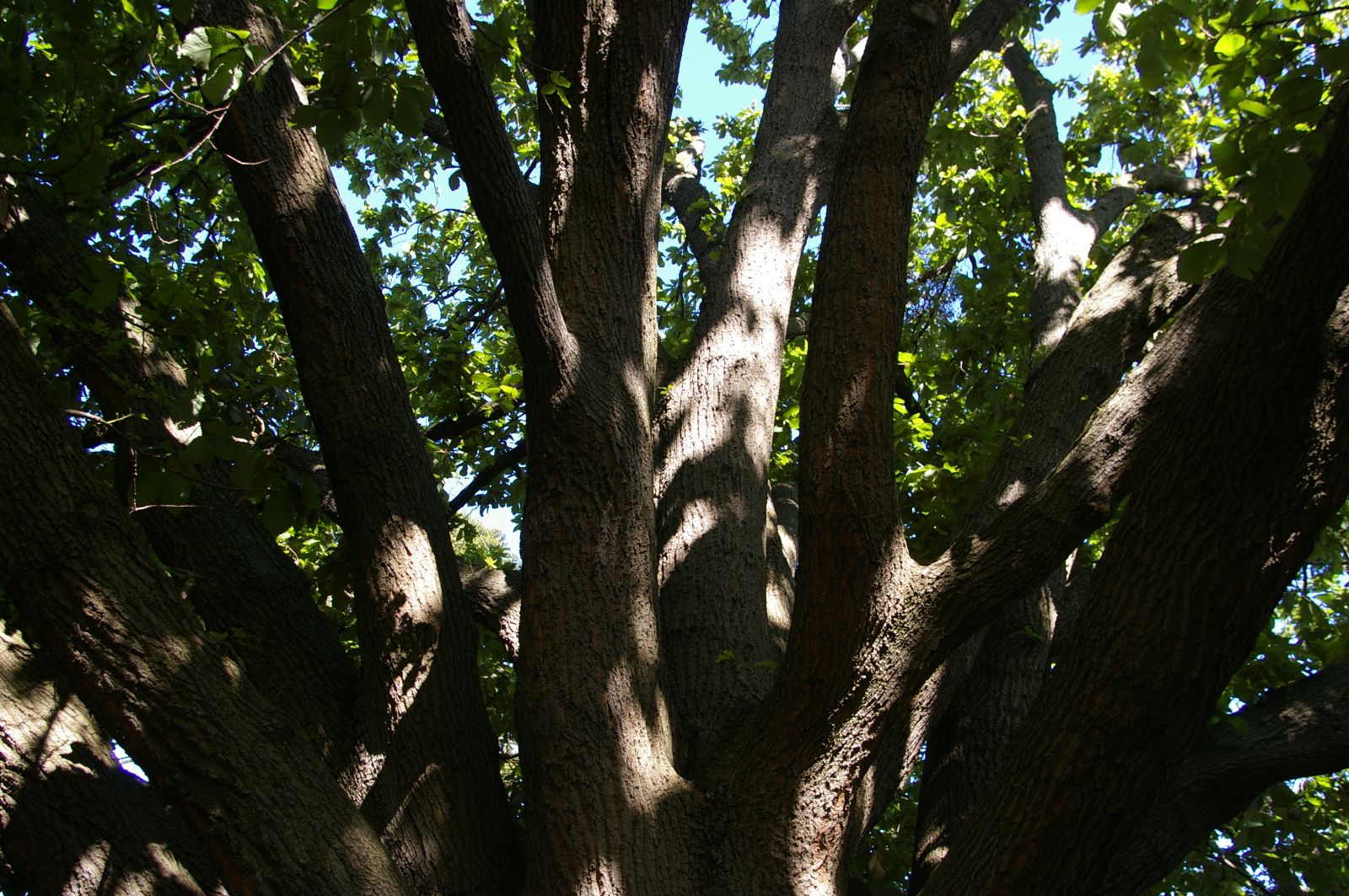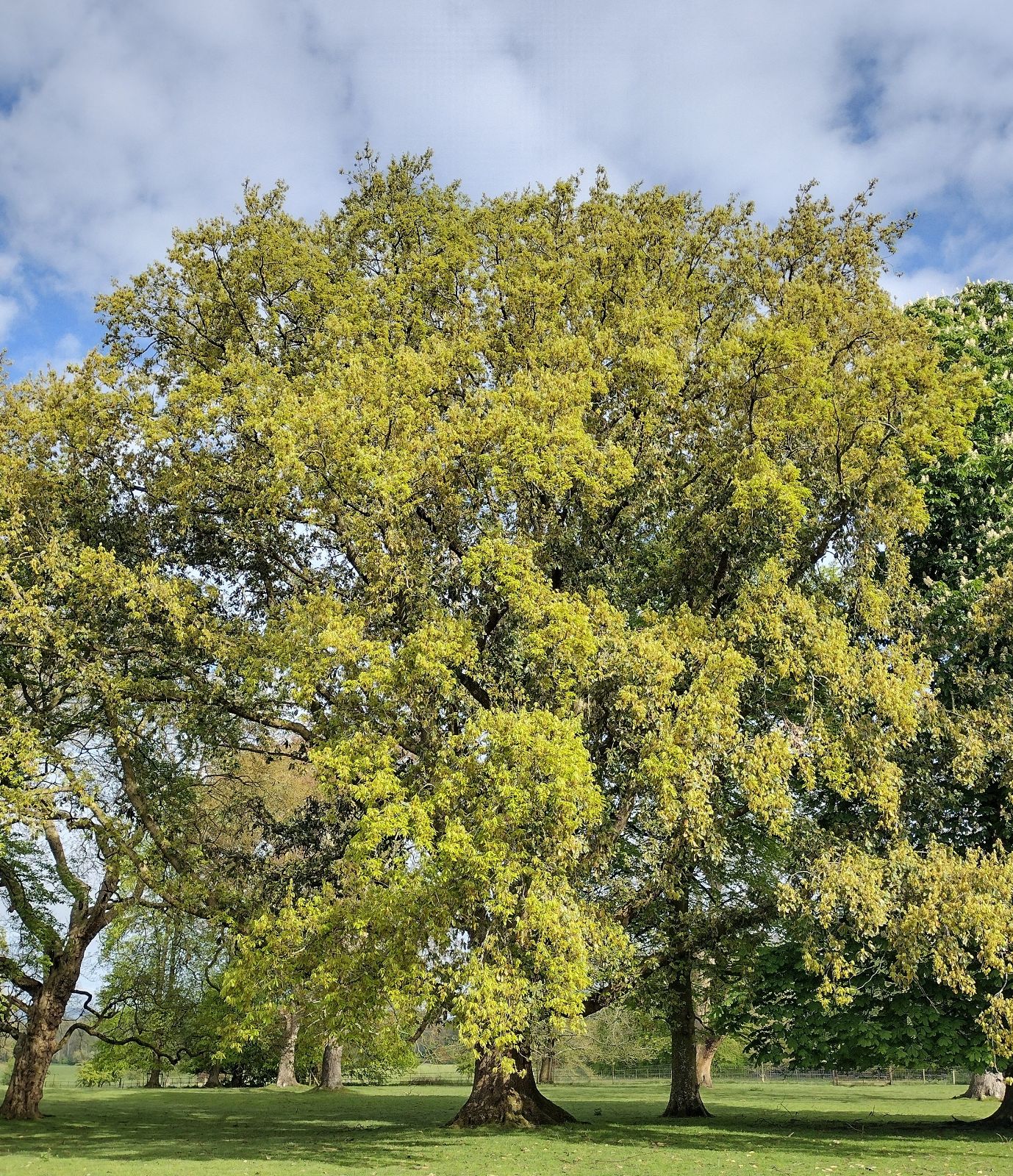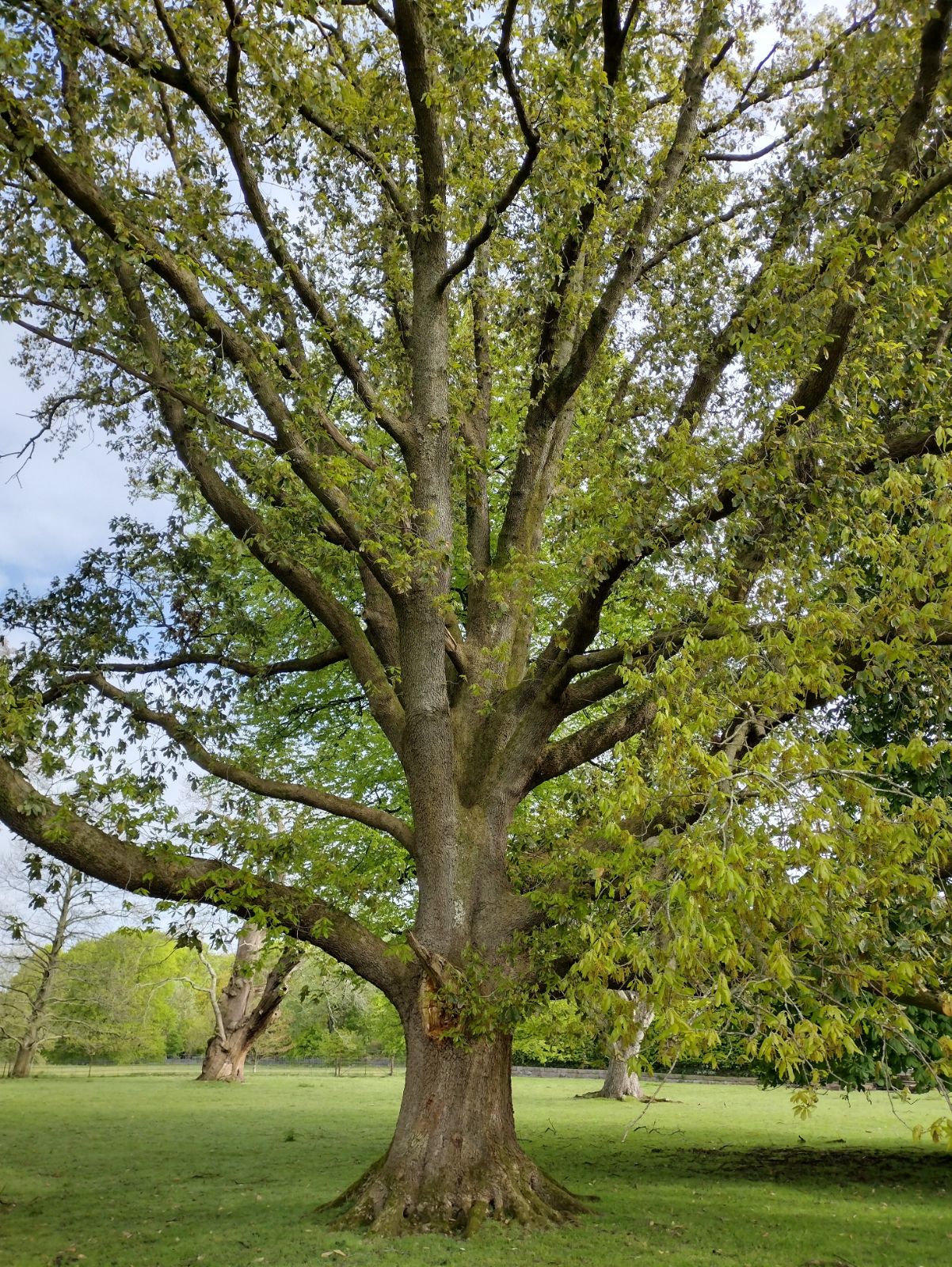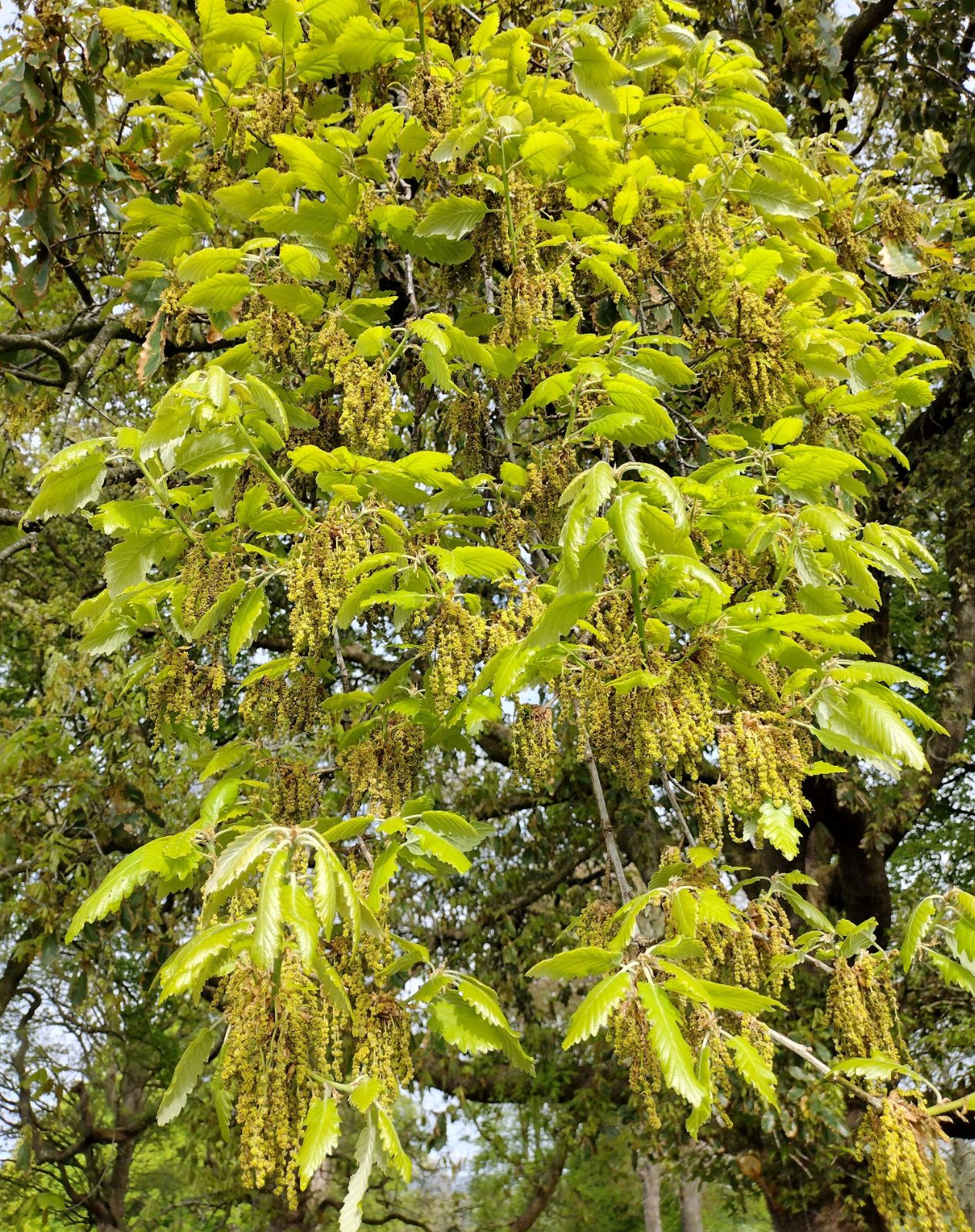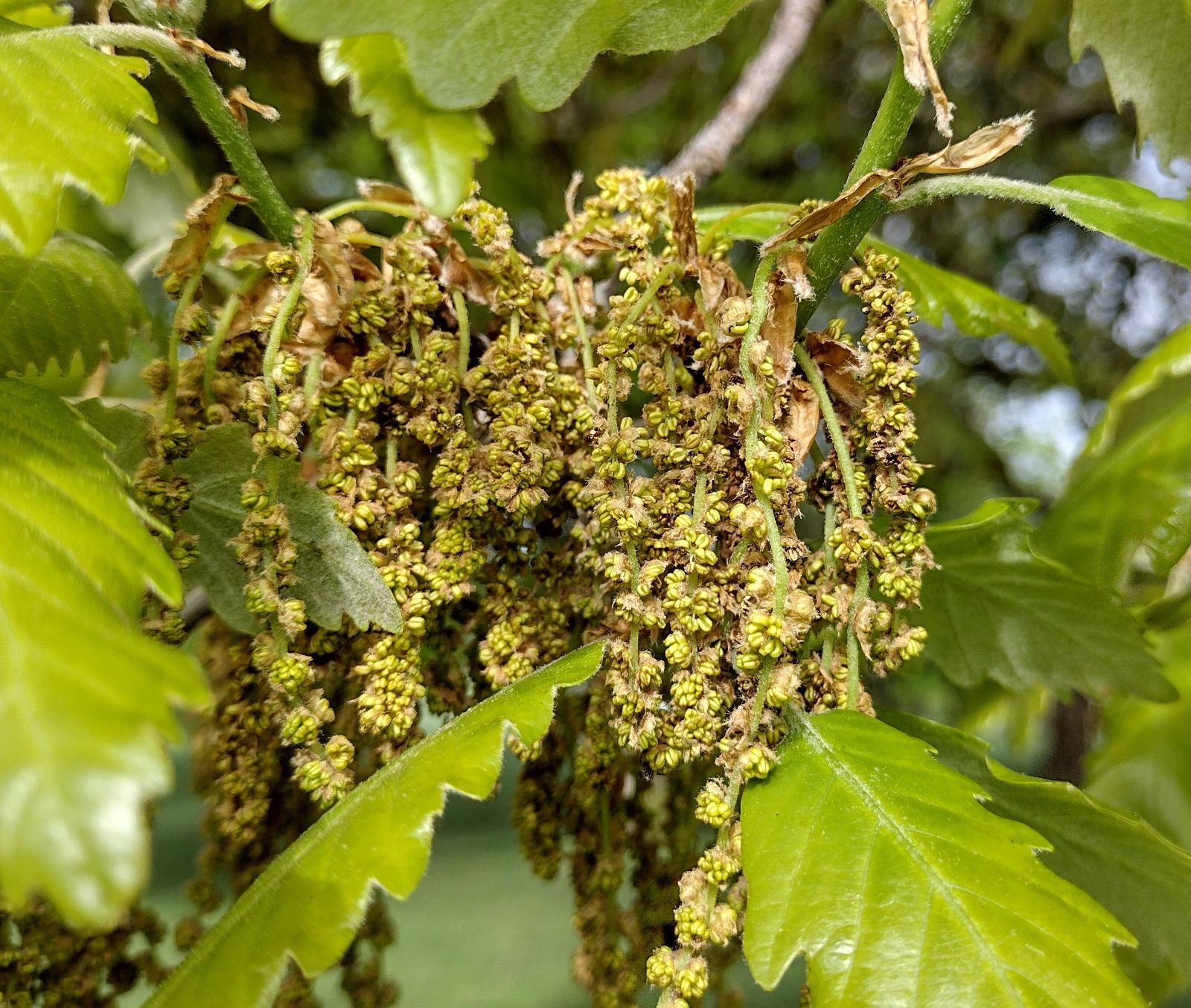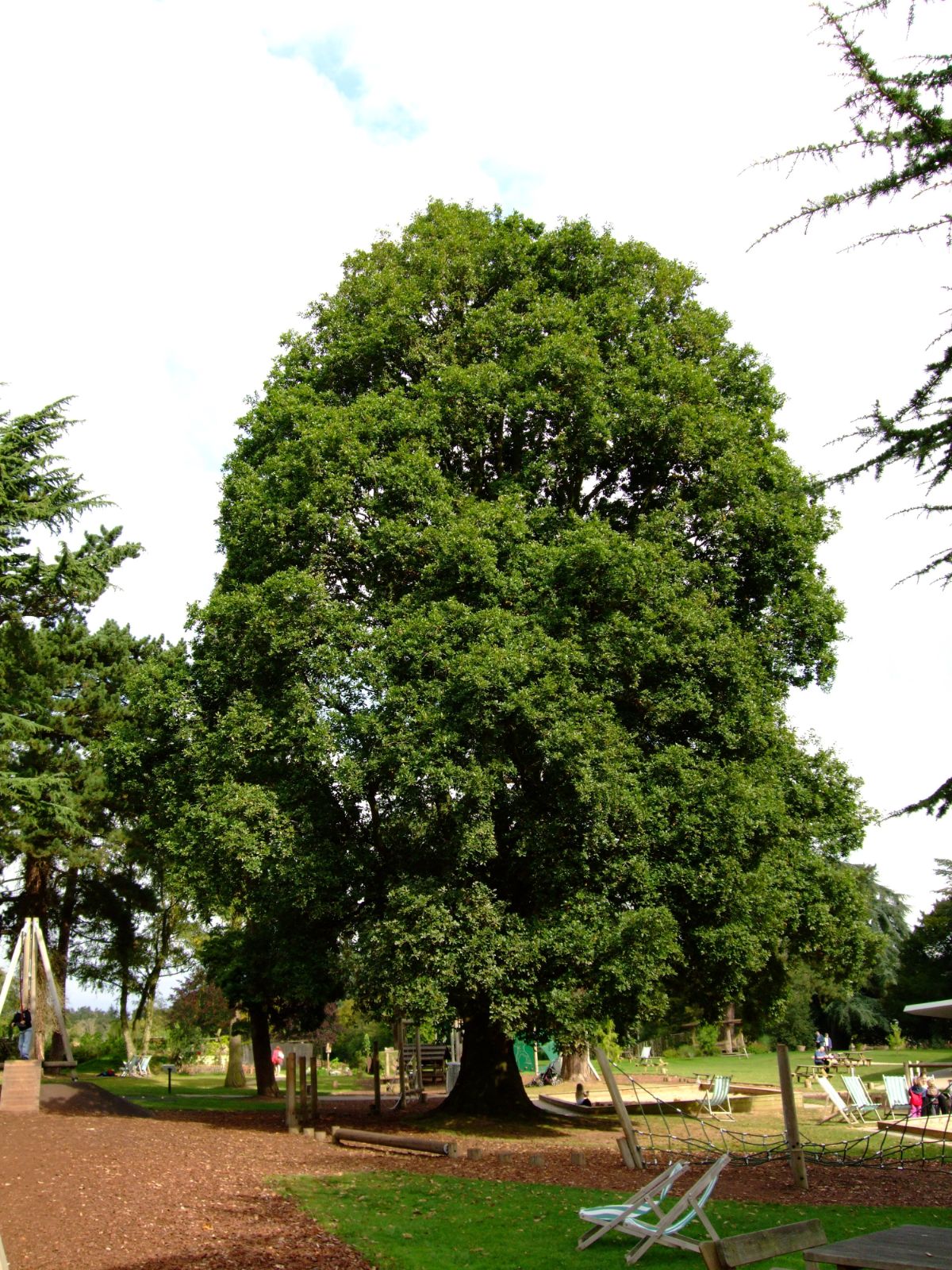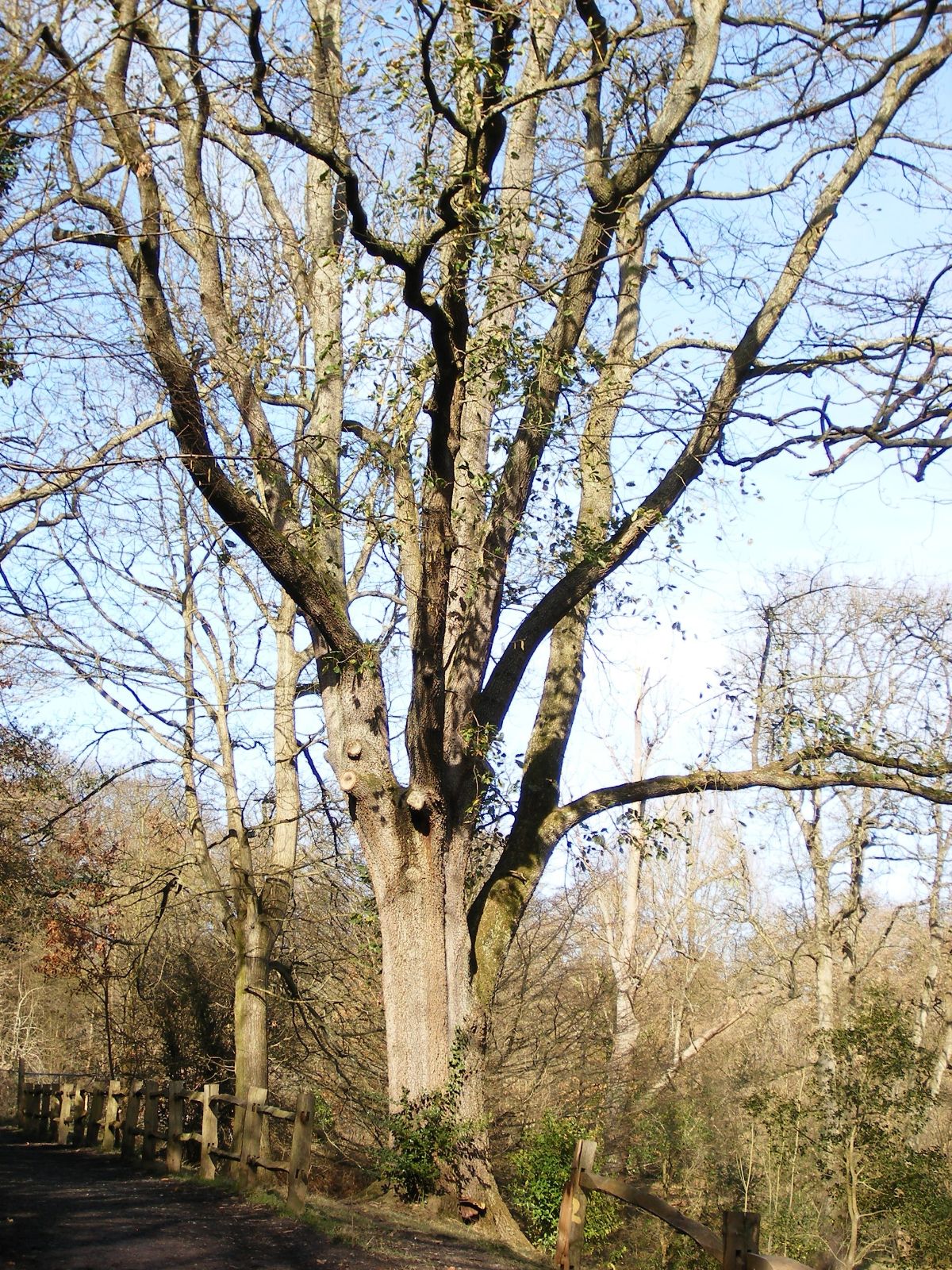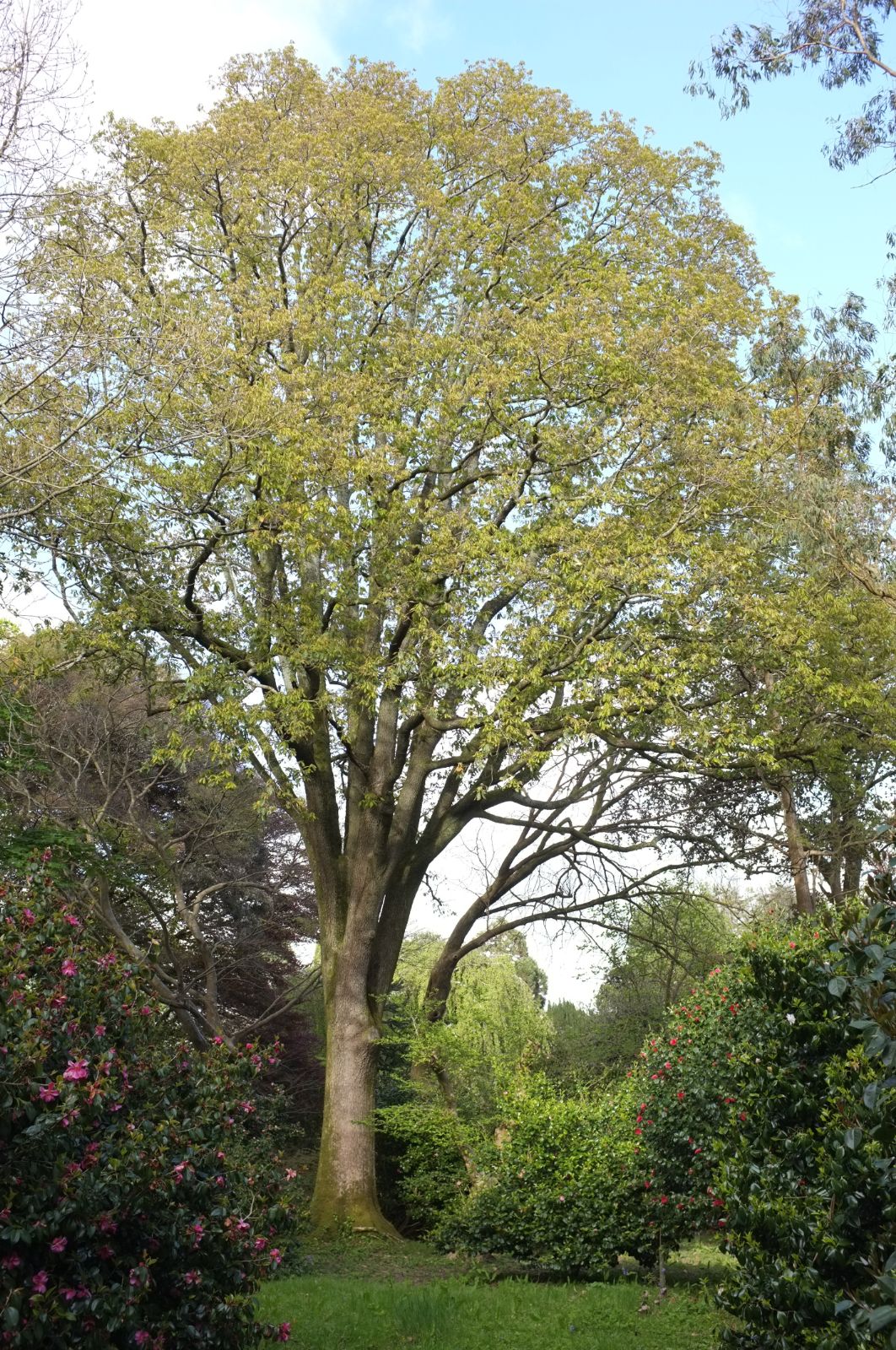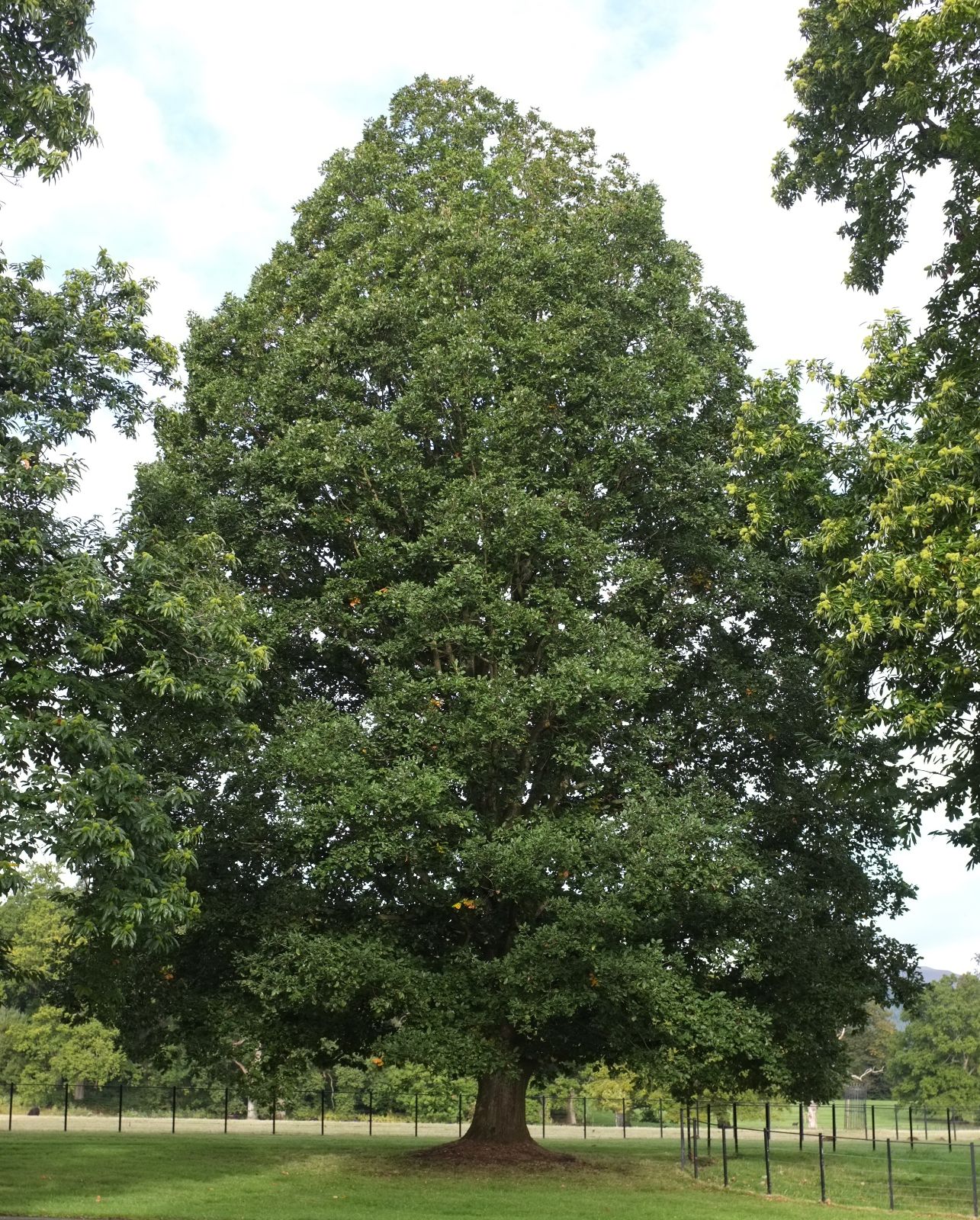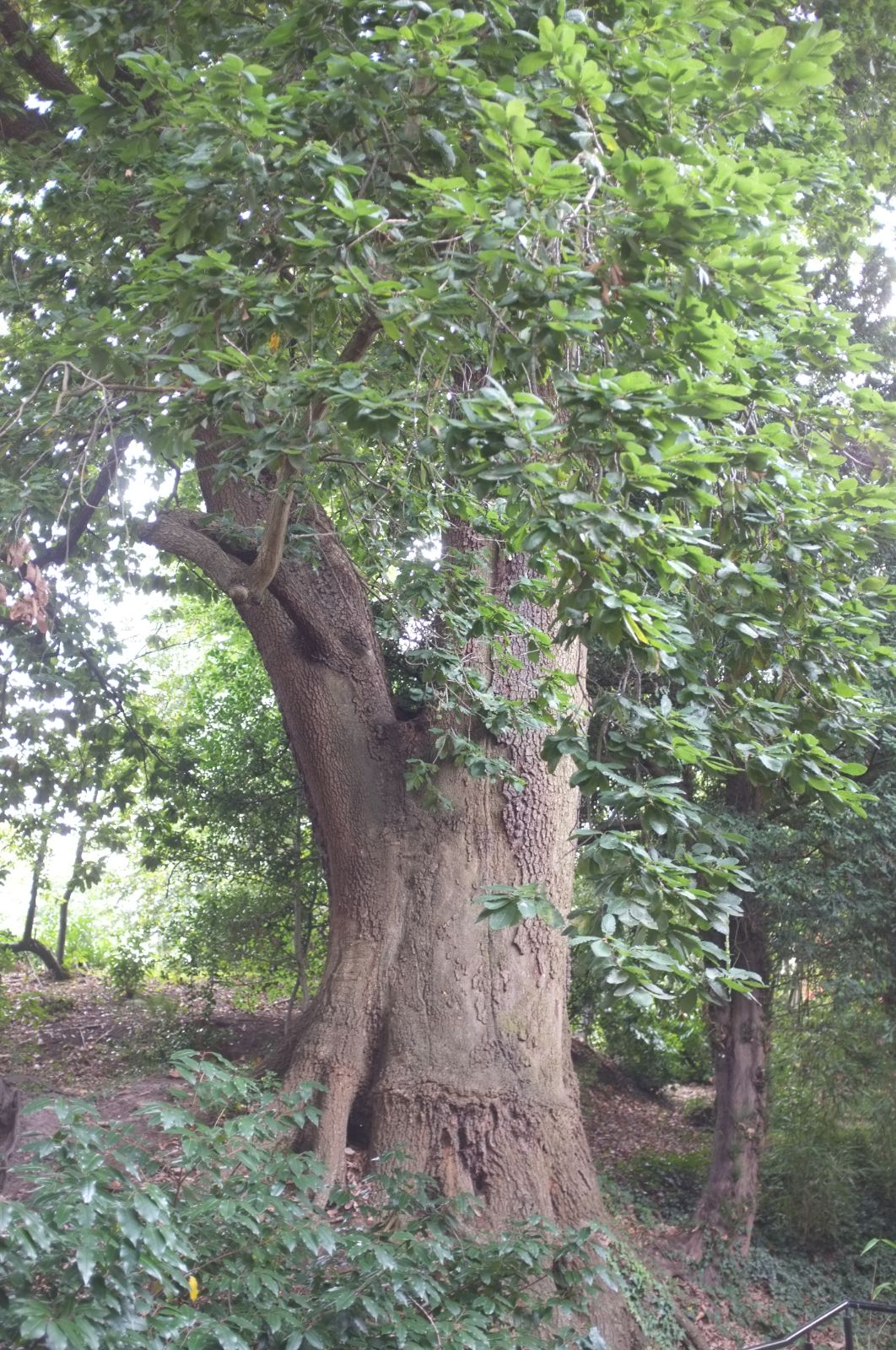Quercus canariensis
Sponsor
Kindly sponsored by
The Trees and Shrubs Online Oak Consortium
Credits
Article from Bean's Trees and Shrubs Hardy in the British Isles
Recommended citation
'Quercus canariensis' from the website Trees and Shrubs Online (treesandshrubsonline.
Genus
Common Names
- Algerian Oak
Synonyms
- Q. mirbeckii Durieu
- Q. lusitanica var. baetica Webb
- Quercus lusitanica subsp. baetica (Webb) A. DC.
Other taxa in genus
- Quercus acerifolia
- Quercus acherdophylla
- Quercus acrodonta
- Quercus acuta
- Quercus acutifolia
- Quercus acutissima
- Quercus afares
- Quercus affinis
- Quercus agrifolia
- Quercus alba
- Quercus aliena
- Quercus alnifolia
- Quercus aquifolioides
- Quercus arizonica
- Quercus arkansana
- Quercus aucheri
- Quercus augustini
- Quercus austrina
- Quercus × auzendei
- Quercus baloot
- Quercus bambusifolia
- Quercus baronii
- Quercus bicolor
- Quercus brantii
- Quercus buckleyi
- Quercus canbyi
- Quercus candicans
- Quercus castanea
- Quercus castaneifolia
- Quercus cerris
- Quercus chenii
- Quercus chrysolepis
- Quercus coccifera
- Quercus cocciferoides
- Quercus coccinea
- Quercus conspersa
- Quercus crassifolia
- Quercus crassipes
- Quercus delavayi
- Quercus dentata
- Quercus deserticola
- Quercus dolicholepis
- Quercus douglasii
- Quercus dumosa
- Quercus durifolia
- Quercus eduardii
- Quercus ellipsoidalis
- Quercus emoryi
- Quercus engelmannii
- Quercus engleriana
- Quercus euboica
- Quercus eugeniifolia
- Quercus fabri
- Quercus faginea
- Quercus falcata
- Quercus floribunda
- Quercus frainetto
- Quercus franchetii
- Quercus fruticosa
- Quercus fusiformis
- Quercus gambelii
- Quercus garryana
- Quercus geminata
- Quercus georgiana
- Quercus germana
- Quercus gilliana
- Quercus gilva
- Quercus glabrescens
- Quercus glauca
- Quercus graciliformis
- Quercus gravesii
- Quercus griffithii
- Quercus grisea
- Quercus guyavifolia
- Quercus hartwissiana
- Quercus hemisphaerica
- Quercus × hispanica
- Quercus hondae
- Quercus hypargyrea
- Quercus hypoleucoides
- Quercus ilex
- Quercus ilicifolia
- Quercus imbricaria
- Quercus incana
- Quercus infectoria
- Quercus insignis
- Quercus ithaburensis
- Quercus kelloggii
- Quercus × kewensis
- Quercus kiukiangensis
- Quercus laceyi
- Quercus laevis
- Quercus lamellosa
- Quercus lanata
- Quercus lancifolia
- Quercus laurifolia
- Quercus laurina
- Quercus × leana
- Quercus leucotrichophora
- Quercus × libanerris
- Quercus libani
- Quercus lobata
- Quercus lobbii
- Quercus lodicosa
- Quercus longinux
- Quercus longispica
- Quercus look
- Quercus × ludoviciana
- Quercus macranthera
- Quercus macrocalyx
- Quercus macrocarpa
- Quercus macrolepis
- Quercus marilandica
- Quercus mexicana
- Quercus michauxii
- Quercus mongolica
- Quercus monimotricha
- Quercus montana
- Quercus morii
- Quercus muehlenbergii
- Quercus myrsinifolia
- Quercus myrtifolia
- Quercus nigra
- Quercus × numidica
- Quercus oblongifolia
- Quercus obtusata
- Quercus oglethorpensis
- Quercus oxyodon
- Quercus pagoda
- Quercus palmeri
- Quercus palustris
- Quercus pannosa
- Quercus parvula
- Quercus petraea
- Quercus phellos
- Quercus phillyreoides
- Quercus planipocula
- Quercus poilanei
- Quercus polymorpha
- Quercus pontica
- Quercus prinoides
- Quercus pubescens
- Quercus pyrenaica
- Quercus rehderiana
- Quercus reticulata
- Quercus robur
- Quercus rotundifolia
- Quercus rubra
- Quercus rugosa
- Quercus rysophylla
- Quercus sadleriana
- Quercus salicina
- Quercus sartorii
- Quercus × schneideri
- Quercus schottkyana
- Quercus semecarpifolia
- Quercus senescens
- Quercus serrata
- Quercus sessilifolia
- Quercus setulosa
- Quercus shumardii
- Quercus sinuata
- Quercus spinosa
- Quercus stellata
- Quercus stenophylloides
- Quercus suber
- Quercus subspathulata
- Quercus tarokoensis
- Quercus tatakaensis
- Quercus texana
- Quercus tomentella
- Quercus trojana
- Quercus tungmaiensis
- Quercus turbinella
- Quercus × turneri
- Quercus undulata
- Quercus utahensis
- Quercus utilis
- Quercus uxoris
- Quercus variabilis
- Quercus velutina
- Quercus virginiana
- Quercus vulcanica
- Quercus warburgii
- Quercus wislizenii
- Quercus xalapensis
A deciduous tree of stately habit, 60 to 90 ft high in Britain, up to 120 ft high in Algeria, with a thick, rugged bark; young shoots ribbed, covered when young with a loose flock, soon glabrous, brown the second year. Leaves oval or obovate, coarsely toothed or lobed, rounded to heart-shaped or auricled at the base, variable in size but usually 31⁄2 to 6 in. long, 2 to 31⁄4 in. wide (often larger on young trees), densely coated on both sides when unfolding with a reddish, floccose tomentum, becoming dark green and quite glabrous above, the underside rather glaucous, also glabrous except for traces of brownish flock on the midrib, especially towards the base and on the stalk, which is 1⁄2 to 1 in. long; ribs in eight to fourteen pairs, fairly straight and regularly spaced. Fruits ripening the first season, scarcely stalked, clustered; acorns about 1 in. long; cup with flattened, downy scales, enclosing the lowest third of the acorn.
Native mainly of N. Africa but also found in the Iberian peninsula, mostly in its southern part. It does not occur wild in the Canary Islands. The date of introduction to Britain is not known, but the oak discussed by Loudon under the queried name Q. australis may well have been Q. canariensis; if so, it was introduced to the garden of the Horticultural Society from the neighbourhood of Gibraltar in 1835. There was an introduction to France by General Pelissier around 1845 by means of acorns, some of which were sent by Louis Philippe to Queen Victoria, who distributed them among the ladies of the court.
Q. canariensis is perfectly hardy, and one of the handsomest of all oaks. It is a vigorous grower and notable for the rich green and large size of its leaves, which remain on the branches until Christmas, sometimes a month or two later. It produces fertile acorns but hybridises so readily with the common oak that its seedlings are rarely true. Fortunately it grows well when grafted on the common or the durmast oak and this is the best way of increasing it if wild-source seed cannot be obtained.
The oldest specimen of the Algerian oak at Kew grows near the Isleworth Gate; it came from Booth of Hamburg in 1869 and measures 74 × 103⁄4 ft (1968). The following are in the main Oak collection: pl. 1882, from the Joad Bequest, 68 × 7 ft (1968); pl. 1895, 66 × 61⁄4 ft (1965) (this tree was bought from Lee’s nursery for half-a-crown and measured 49 × 41⁄2 ft in 1938); pl. 1904, 64 × 53⁄4 ft (1965).
Some of the notable trees in other collections are: Ham Manor, Sussex, two trees mentioned by Elwes and Henry, the larger 70 × 81⁄4 ft (1907), now 76 × 133⁄4 ft (1965); Melbury Park, Dorset, 80 × 101⁄4 ft (1970); Tortworth, Glos., 75 × 10 ft (1965); Osborne, Isle of Wight, 90 × 81⁄4 ft (1964); Howick, Northumb., pl. 1851, 60 × 7 ft (1958); Holker, Lancs, 75 × 12 ft (1971).
From the Supplement (Vol. V)
specimens: Kew, by Isleworth Gate (see page 465), pl. 1869, 82 × 111⁄4 ft (1978), pl. 1882 (Joad Bequest), 71 × 7 ft (1978), pl. 1895 (see page 465), 68 × 71⁄2 ft (1986); Osterlev Park, London, 85 × 81⁄2 ft (1982); Ham Manor, Sussex (see page 465) 88 × 133⁄4 ft and 90 × 141⁄2 ft (1983); Alexandra Park, Hastings, Sussex, pl. 1880, 85 × 101⁄2 ft (1983); Melbury, Dorset, a tree mentioned by Elwes and Henry, 100 × 12 ft (1980); Westonbirt, Glos., Broad Drive, pl. 1876, 90 × 9 ft (1983); Tockington Manor, nr Bristol, 73 × 101⁄2 ft (1983); Holker Hall, Lancs., 72 × 121⁄2 ft (1983).

